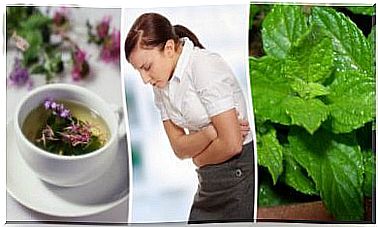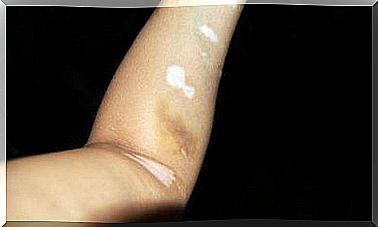Chondromalacia Of The Patella: What Is It?

Chondromalacia of the patella is one of the most common diseases of the knee. It must be remembered that this joint has a considerable predisposition to injury, as it supports a large part of the body weight. In addition, there are other risk factors, such as age, overweight, poor sport practice, etc.
It should be noted that chondromalacia of the patella is a relatively common disease among young adults. It has a particular incidence in people who play football, basketball, volleyball, tennis, cycling, karate, rowing, rugby, athletics or dance. Mountaineers are also prone to suffer from it.
It should be clarified that in medicine the word “chondromalacia” indicates the softening of the cartilage of the knee. Nonetheless, this term is used to indicate any severe pain in this joint.
Today it is believed that it is more correct to speak of patellofemoral syndrome than of chondromalacia of the patella when the cause of knee pain is not known. From a medical point of view, however, the term is still acceptable. This disorder is also sometimes called patellar chondromalacia.
What is patella chondromalacia?
The patella, also called the patella, is a flat bone found at the front of the knee. It articulates with the femur and its main function is to protect and facilitate the sliding of the joint. Chondromalacia of the patella is a degenerative disease that affects the cartilage present on the articular surface of the patella.
As a result, the bone remains exposed to direct rubbing during joint movement. In most cases, this phenomenon obeys the softening of the cartilage causing pain in the front of the knee.
Cartilage acts as a shock absorber in the joints; it is made up of 90% water and 10% cells, which allows it to withstand the energy produced by impacts. Chondromalacia of the patella occurs because the cartilage has lost its structure, that is, it is no longer smooth, but rough and gray.
The cartilage then becomes thinner and more irregular; sometimes it has cracks and even fractures. Under these conditions, the knee produces sounds and creaks when certain movements are performed. The person also experiences severe pain.
Causes of the problem
Chondromalacia of the patella is due to the repeated trauma to which the knee is subjected. In other words, repetitive movements that cause compression on the cartilage. This explains why some sportsmen are more prone to suffer from it. But the problem can also be due to other factors, such as:
- Misalignment of the patella.
- Very strong impacts, such as falling on a bent knee, hitting an object or traffic accidents.
- Incorrect movements due to an abnormality affecting the feet or from the use of high heels.
- Previous knee dislocation or fracture.
- Overweight.
- Muscle wasting or weakness.
- Asymmetry between the legs.
- Prominent curvature of the spine.
Pain in case of chondromalacia of the patella
Pain usually appears when exercising. It increases when the subject runs on very hard surfaces or when going up or down stairs.
It can also occur when it stays with the knees bent for a long time, in which case it also feels additional stiffness. When knee flexion is performed, the crunches typical of chondromalacia of the patella often occur.
Over time, this anomaly is bound to affect the power of the leg muscles and, consequently, on motility. Different levels of severity are indicated based on the phase of the condition :
- Grade 1. The cartilage softens and edema develops.
- Grade 2. Imaging reveals that the cartilage has fibrillation. It appears as if it is “frayed”.
- Grade 3. The cartilage has cracks, some of which are very pronounced and reach the deeper layers.
- Grade 4. We are in the presence of an ulceration. Grade 3 condition appears more prominent and severe.
- Grade 5. An ivory reaction occurs, which is a pathological process of exuberant production of bone tissue. It is an effect of the aggravation of the ulceration, which ends up affecting the subchondral bone.
Generally, a conservative treatment is used to manage the chondromalacia of the patella. If this is not achieved, surgery will be required.
